SUMMARY
This is AI generated summarization, which may have errors. For context, always refer to the full article.
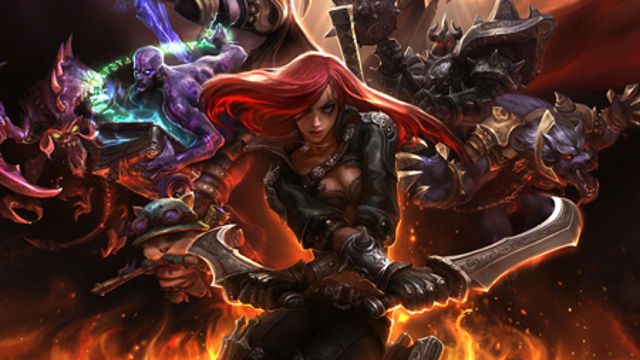
League of Legends (LoL) is a popular free-to-play multiplayer online battle arena (MOBA) by Riot Games. In its classic game type, two teams of five navigate through lanes and jungles, and take down objectives to ultimately destroy the enemy base’s center, or Nexus.
Since its launch in 2009, LoL has garnered 67 million monthly players worldwide. Riot has cultivated a large and active competitive scene starting in 2011, where professional teams from all over the world compete in international tournaments. Most prestigious of all these competitive tournaments is the League of Legends World Championship, where the top teams from each region are brought together to compete against each other.
The Philippines is home to national and local LoL esports tournaments such as the Pro Gaming Series. Just recently, Rappler’s Gaming League also launched their own tournament, inviting college teams to compete in the tournament.
Curious about getting into this game? This comprehensive guide should give you a good head start in learning the basics. We will deal with the main and side objectives of LoL’s classic game type. We will tackle champions, roles, and general itemization. We will also go over some basic tips and strategies for you to use.

Objectives
The map you will most likely play the most on is called Summoner’s Rift. There is only one goal in this classic game type, and that is to destroy the nexus in your enemy’s base.
The map has two bases, three lanes, two jungles, and a river splitting the map in two. Each team has two towers for each lane, with five towers guarding their base. The jungles have several neutral monsters which will reward individual players with different buffs after killing them. The river has two major neutral monsters that reward the team as a whole when killed.
These are the main objectives in Summoner’s rift:
Towers
Summoner’s rift has 22 towers/turrets – 11 per team. Taking down enemy towers will bring you a step closer to destroying the enemy nexus. Enemy towers will attack your minions if you are not attacking an enemy champion within the tower’s range. You cannot skip and take down a tower when you have not destroyed the tower before it.
The inner towers grant its ally champions a protective shield when they are within its radius. This makes it a little more difficult for enemy champions to siege your base.
Taking out these towers grant the entire team gold, and you get a little extra if you have participated in shutting it down.
Inhibitors and the Nexus
Inhibitors are structures located within the base and must be taken down before you can deal damage to the Nexus turrets. Taking down enemy inhibitors will give your opponents a tougher time in defending their base as it allows your team to generate super minions. Super minions are larger than regular minions. They are tougher to kill and deal a lot more damage.
Once you take one or more inhibitors down, you can then work on destroying the Nexus turrets. Both of which have more health than the turrets that preceded them. You cannot take down the Nexus without destroying both Nexus turrets. Inhibitors respawn after approximately 5 minutes, which is rather important to note.
To give you an edge against the competition, make sure to take a few side objectives:
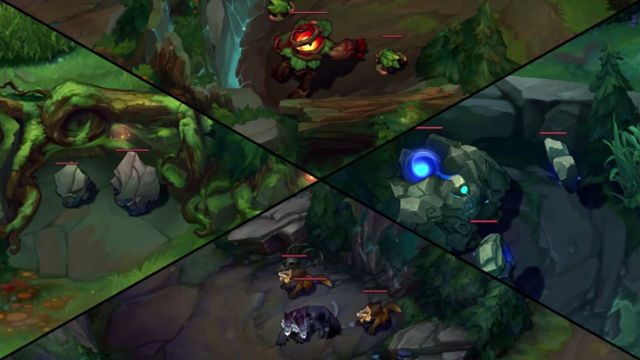
Dragon and Baron Nashor
Two of the biggest side objectives is taking down the Dragon and Baron Nashor. Both of which reside along the river of Summoner’s Rift. The Dragon is located in the blue team’s lower quadrant, while Baron Nashor is located in the red team’s upper quadrant.
For the first 4 times that you take down the Dragon, your team gets a specific boost. The first kill will give you additional attack damage and attack power. The second kill will increase your damage against towers and buildings. The third kill will grant you additional movement speed. And the fourth will boost your damage against minions and monsters. When you take out the Dragon for a fifth time, your buffs will increase two-fold for 180 seconds and your attacks will burn for a specific amount of true damage for a short while. Killing the dragon after the fifth time will once again grant the Aspect of the Dragon buff.
Baron Nashor, however, is a bit different compared to the Dragon. Taking down Baron Nashor will grant champions an aura that provides a very helpful buff that affects your team and your minions. Getting the Baron buff will up your attack damage and ability power, as well as decrease the time it takes for you to recall back to your base. Stealing or killing Baron Nashor can speed up your victory or turn the tide against your opponent and give you a great comeback when needed.
Jungle Camps
For beginners, jungle camps may not mean much. When you battle AI champions, they ignore these camps and allocate their efforts only towards destroying your towers. As you move up and decide to go on PvP challenges, jungle camps can spell the difference between life and death. Considered two of the most important camps are the Blue Sentinel and Red Brambleback camps. The Blue Sentinel gives you a mana regeneration boost while the Red Brambleback burns enemies for a specific amount of true damage when you autoattack them.
Another important camp is the Gromp camp. Using the spell Smite on the Gromp will grant you the Gift of the Toadstool buff which poisons anyone who attacks you. Both teams have the same camps on their respective sides of the jungle.
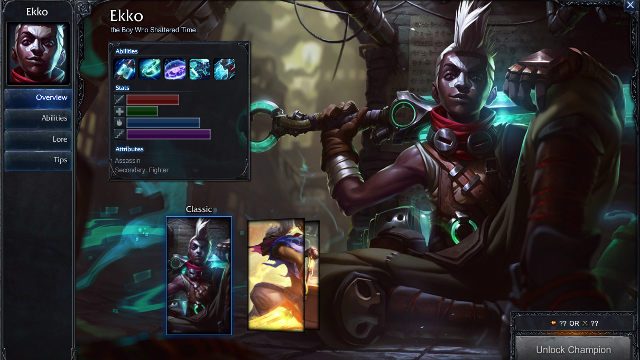
Champions
Now let’s move on to the more exciting bit: the champions. Each champion has a unique set of skills and attributes. They need different play styles and items to maximize their strengths. Certain champions are best played when they are used for their specific roles. Other champions are more flexible, and can be used for two or more roles. But before we go through these roles, let’s talk about what you should consider for your first few champions before going on to the rift.
Attributes and Abilities
When you start picking a champion you need to take note of their attributes and abilities. Make sure you read up on them before purchasing them or taking them out in a normal game. These elements will determine the kind of play style you need to maximize their output.
For example, if you are the type of player who prefers going on the offensive, you want to choose champions with high damage outputs. Look for a champion with high ability power (AP) stats if you like going all out. If you prefer speedy and safe plays, look for a ranged attack damage (AD) champion. Consider their attack speed and movement speed as mobile champions can escape faster should you overstep your boundaries in the game.
If you prefer a more supportive role, look for a champion with utility skills such as heals and buffs. You also want to look into a champion with crowd control (CC) attacks or skills. CCs either apply stuns, slows, taunts, knock-ups, or basically anything that slows down or manipulate your enemy’s movement.
Extra Tip: Another aspect you should look into, regardless of whatever position or role you want, are skillshots. As a beginner, choosing whether or not to use a character with skillshots matter a lot. Champions with skillshots have a bit more pressure on their shoulders since they require you to target your skills properly before they are activated. Some skillshots are difficult to land and are crucial to the success of your team. These take a lot of practice so don’t sweat it if you make mistakes. But if you lack confidencewith your targeting, practice with bots first before you take on other players.
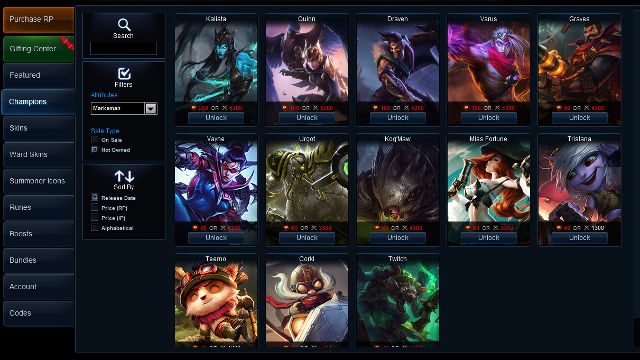
Here’s a quick cheat sheet for roles and champions:
Top
These are the bruisers and tanks. They occupy the top lane at the beginning of the game and sometimes go solo or with a jungler. In team fights, they are usually expected to be in the front lines to soak up the damage from the enemy team. A tanky item build with a lot of health, defense, and magic resistance, will definitely help top champions become a frustrating target for enemies.
Top champion examples: Gnar, Rumble, Nasus, Riven, Sion.
Jungler
Junglers, as the name suggests, occupy the jungle. Junglers have a lot of pressure riding on them because they are in charge with providing support to the whole team through ganking. Ganking is assisting your teammate by ambushing an enemy. Successful ganks can give you a fairly good advantage against the enemy team, while failed ganks can affect your experience and your team as a whole due to wasted time and effort. You are also partially in charge with creating vision around the jungle via wards. A typical jungle build consists of gold income items, and mobility items to get you to different lanes faster. Your mix of attack and defensive items depend on the situation.
Jungler champion examples: Evelynn, Rek’sai, Sejuani, Elise, Lee Sin.
Mid/AP Carry
Mid champions are expected to be the biggest damage dealers in the game aside from the AD-Carry. Mid champions occupy the middle lane, the fastest path to the enemy nexus. Mid champions often use burst attacks to take down enemy champions with just a few skills. They can also use powerful long-range attacks to gradually kill an enemy or force them to exit the fight.
Many mid champions are tricky to use and will have skillshots in their kit to balance out their heavy damage. A mid champion build will focus on increasing their damage output while sustaining them. Common mid champions use ability power items, and items to increase your mana limit or generate mana faster.
Mid champion examples: Azir, Le Blanc, Orianna, Lissandra, Twisted Fate, Ahri.
Support
The support player is just what you think it is. At the beginning of the game supports stay by the side of the squishy AD Carry. During the mid-game or in team fights, supports can be more flexible and can assist the rest of the team when needed. Supports have buffs and crowd-control skills to keep the team fighting or to help them escape a dire situation. Supports also stay on top of warding the map to keep their team informed of enemy movements. Supports will want items that buff nearby ally champions or debuff enemy champions. Additional defense items, and vision items are also a must for supports.
Support champion examples: Sona, Soraka, Thresh, Janna, Alistar.
AD Carry
Good AD Carries are fast and have high damage output. They’re also usually the squishiest champions in the game, which is why they are accompanied by a support. AD Carry champions must have good range in order to hit enemy champions from the backlines during teamfights. An AD carry’s build consists of attack damage and attack speed items, mobility items, and critical attack items.
AD Carry champion examples: Ashe, Vayne, Lucian, Jinx, Caitlyn.
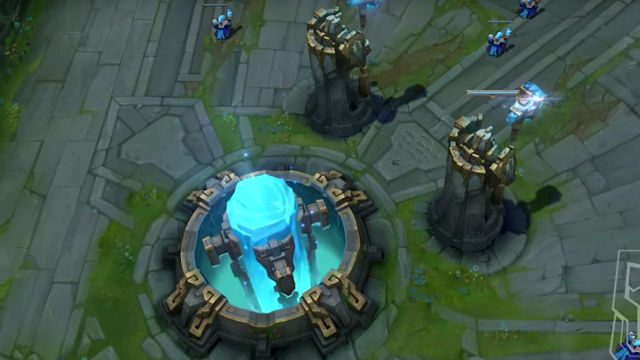
Itemization
Another crucial part in playing LoL is choosing the correct build or itemization for your champion and role. When you start a game you are given the option to purchase your first items and more often than not, you will end up choosing the game’s recommended items. Upon selecting an item, you will find that most of them can be built into better ones. Most players use this as their guides when purchasing their items throughout the game. Others find websites with champion and itemization guides and use the recommendations there instead.
There’s nothing wrong with that, but as you advance into the game you should learn to choose items that also fit your current role and situation in the game. Most beginners stick to recommendations and never go beyond what the game suggests. In reality, players have to be open to other items that are sometimes more useful than the first items you see on screen.
Adapting your items to the situation is one way of assuring victory in your battles.
If you explore beyond the recommended menu you will find that the items are categorized to attack items, defensive items, magic items, movement items, consumables, and trinkets. These categories have filters to help you find items with the specific attributes you need if you are in a mood to experiment or find out that recommended items are not working out for you anymore.
If your opponents attacks are becoming too much for you to handle, skip the attack item for now and buy an armor. If they use magic damage, look for a magic resist armor. If your opponents keep using their CC skills on you, grab an item such as the Mercurial Scmitar or Mercury’s Treads to lessen the impact.
Extra Tip: Another way to adapt is by using items that counter your opponent’s items. Take a peek at everyone’s build by pressing and holding the tab item. If you see that they are investing in a lot of armor items, use an item that ignores a percentage of their armor such as Last Whisper.
Masteries and Rune Pages
These are extra attributes that you can apply to any of your champions. Masteries and Rune Pages fine tune your champions to better suit the role they need to fulfill. They can add different attributes to your offense, defense, and utility. You can add attack speed, lifesteal, attack damage, ability power, magic resist, and many more to your champion.
You can create several of these for different champions which you can select before the game starts. You can also adjust your masteries and runes before you create or start a game.
Much like your itemization, build your masteries and rune pages according to your role in the game.
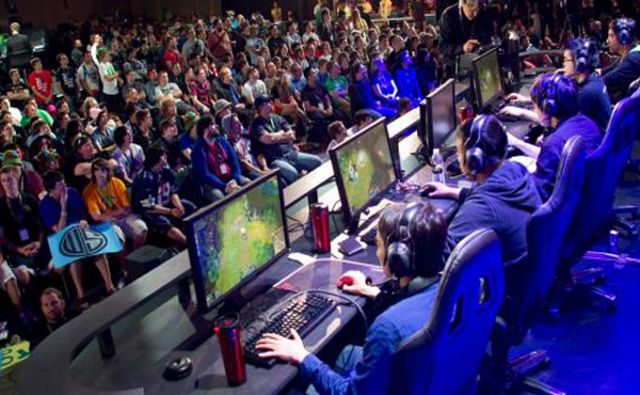
Basic Tips and Strategies
League of Legends is a game of mechanical skill and strategy. Above all else though, it is good teamwork and communication that wins games. Most beginners throw the idea of practicing strategies out the window and focus only on their individual mechanics. Invest in practicing a few basic strategies either individually or with a group of friends. This will save you from a slew of trash talking and negative feelings after a game.
Team Composition
At the beginning of the game, you get to choose your champions with your comrades. This is a crucial stage in the game that will determine how easy or how hard you need to work for to get a victory.
While most of your first games will be Blind Picks, meaning you will not get to see the champions of your enemy teams, it’s still a safe bet to come up with a well-rounded composition. Choose a champion that fits the role the team needs. It’s a plus if you choose a champion that also synergizes well with others.
Learn your boundaries
The key word here is “respect.” As a beginner, you will most likely not have an idea on how much you stack up against your opponent. It’s important to get a feel of your limits as well as your enemy’s as you trade attacks, but remember to never go all out within the first few minutes of the game.
At a beginning level, it’s a safe bet to assume that most of the opponents you will encounter are more experienced and more skilled. Respect this and do not force yourself to be the star of the game immediately. Stick to playing defensively and keep your eyes open for opportunities.
Vision Control
Vision is a valuable element in winning games. Vision gives you information of where the enemy team is and what they are up to, allowing you to counter it effectively.
While we mentioned that Junglers and Supports are tasked with warding the map, the rest of the team should also contribute. Never forget to purchase vision trinkets early on and upgrade them when the option is available. Use them as much as you can to help the team stay informed of enemy movements.
Objective Control over Kills
Beginners often focus too much in the glory of getting kills. Remember that this game is not won by individual stats. It’s more important to keep control of the map objectives than getting a 20+ kill score. There have been plenty of cases where teams have lost games because they focus too much on killing the enemy champions, neglecting the fact that many of their towers have already been taken down. Most of the time, they realize this when it is too late and they are defenseless when the enemy team starts barging down their base.
Focus on what needs to be done. Take down enemy towers and gain advantages through neutral monsters, and everyone will be happy in the end.
This concludes the first part of our League of Legends Primer. In the next half of this series, we’ll be talking about the international and local professional gaming scene, delving deeper into terminologies, and breaking down advanced tactics and strategies of the professionals. – Rappler.com
Add a comment
How does this make you feel?
There are no comments yet. Add your comment to start the conversation.